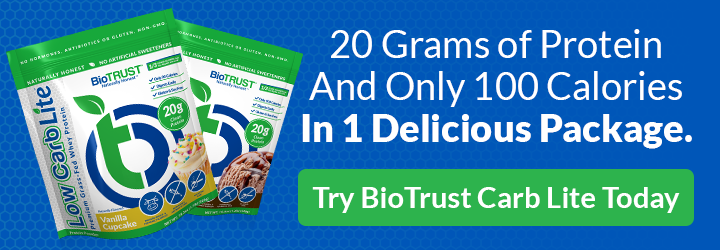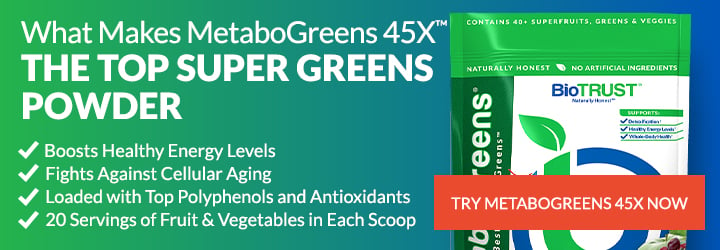Food Addiction: See the Causes and Most Addictive Foods

Prepare yourself for some depressing news (sorry!): By 2030, an estimated 85% of U.S. adults are projected to be overweight or obese. 1 And unfortunately, we haven’t been as successful as we might have hoped at developing effective long-term weight-loss treatments. Of course, the causes of the obesity epidemic are complicated and numerous. For example, in addition to the most addictive foods being readily available, people today are eating larger portions and moving less.
You may ask yourself, “How did we get here?” Can food really be “addictive”? And what does that even mean?
What is Food Addiction?
Food addiction is “characterized by symptoms such as a loss of control over consumption, continued use despite negative consequences, and inability to cut down despite the desire to do so.” 1 In addition, it’s associated with increased impulsivity, emotional reactivity, and even withdrawal symptoms, like anxiety and aggression, when it’s taken away.
Neuroimaging studies have even found biological similarities in the reward-related regions of the brain, as well as dopamine signaling, between food addicts and those who are addicted to recreational drugs (e.g., heroin). 1 There are also, however, substantial differences, so the two types of addictions are not equivalent. 3 Addiction is a complicated, multifaceted problem.
That said, if people aren’t exposed to addictive substances, then even those who are vulnerable don’t develop addictive behaviors. So, the next logical question is obvious…
What Makes Food Addictive?
It should come as no surprise that “real food” is rarely addictive. That is, foods in their natural state—whole vegetables, meats, and even sweet fruits—aren’t likely to be abused. It’s only once a food has been processed—or more likely, ultra processed—that the “abuse potential” increases.
In other words, no matter how fresh and sweet raspberries from a raspberry bush are, you will likely only eat so many. No matter how much you enjoy snacking on unsalted nuts, they also tend to be self-limiting. You fill up and stop eating. Yet these are foods that are relatively high in sugar (fruits) or fat (nuts). It is worth noting that, in nature, significant amounts of fats and carbohydrates are rarely found in the same food. 1
Once fat and sugar are refined and combined, however, the equation changes drastically, and the food becomes far more enticing. And now, highly processed foods, which have higher amounts of refined carbohydrates (e.g., flour, sugar) combined with fat—yet lower in nutrients like vitamins and minerals and fiber—are found abundantly and ubiquitously. In short, these nutrient-sparse, addictive foods are cheap, easy to find, and thus, consume.
In addition, addictive agents are known to hit the bloodstream faster. For one example, look at the coca leaf. It was chewed for thousands of years with little addictive potential. Yet once it was processed into a very concentrated dose that’s rapidly delivered into the bloodstream, it became the highly addictive drug cocaine.
Likewise, sugar is found naturally in many fruits and vegetables. Yet because it is packaged with various fibers and phytonutrients, it is much less likely to cause a spike in blood sugar than highly processed foods. For instance, a banana can be a sweet treat, but while it contains sugar, it also provides fiber, water, various phytonutrients, and even a small amount of protein (1.3 grams) along with a range of vitamins and minerals. On the other hand, a milk chocolate bar is made with refined white sugar and is absorbed much more quickly and thus has a greater potential to be abused. 1
RELATED: Collagen Doesn’t Work (Unless…)
Most Addictive Foods
There are probably some unique individuals who can keep cookies, cakes, potato chips, candies, cheese, crackers, and the like in their kitchen pantries without a thought. For many of us, though, if these foods find their way into the house, they get eaten. Fast. In fact, an estimated 20% of people have shown addictive-like eating behaviors. That number is even higher for women, people over 35 years old, and folks who are overweight or obese. 2
So, which foods are more likely to be addictive and thus lead to uncontrolled consumption and possibly future weight gain? Broccoli? Kale? Don’t we wish! Instead, according to the Yale Food Addiction Scale, 4 the probable suspects are highly-palatable, high-calorie, highly-processed foods, like:
- Chocolate
- Ice Cream
- French Fries
- Pizza
- Cookies
- Chips
- Cake
- Buttered Popcorn
- Cheeseburgers
- Muffins
- Breakfast Cereal
- Gummy Candy
- Fried Chicken
- Soda
- Plain Rolls
- Cheese
- Pretzels
- Bacon
- Plain Crackers
- Granola Bars
Topping the foods on the list are all highly processed foods with the exception of cheese and bacon. Both are considered unprocessed (unless you’re looking at American cheese), but they’re both higher in fat and salt, which are two of the three pillars of processed foods and the magical “bliss point”.
This may also explain why it’s easier to overconsume salted nuts that are roasted in oil compared to raw nuts, as the former has that tasty, highly palatable combination of added salt and fat along with the noticeably sweeter taste that comes out when nuts are roasted.
Foods at the bottom of the list included fruits and vegetables like carrots, broccoli, and strawberries.
The most addictive foods tend to be that serve up the magical combination of fat with a higher glycemic load—that is, they’re higher in sugar and cause a blood sugar spike. The majority of the most addictive foods also contain the addition of the third pillar of processed foods, sodium, for bonus points. Plus, many of these foods may be intentionally manufactured to create a higher “reward” by providing that hard-to-refuse combination of fat and refined carbohydrates.
Freedom from Food Addiction?
Although not all foods are likely to be addictive, it’s important to know which ones are, so you know what to avoid. This is especially true for more vulnerable adults; for example, people who have a high body mass index are more likely to have a difficult time controlling their intake of particular foods. Especially when rushed and then exposed to ultra-processed foods, it’s easy to grab foods that can lead to more addictive behaviors.
So, what can you do to fight food addictions or, better yet, avoid them in the first place?
The first step is to acknowledge there is a problem rather than ignore it. Write down a list of foods you crave or that you find yourself bingeing on when they’re around.
Next, eat a diet that’s made up of mostly whole-ingredient foods. Make a list of healthier options that you enjoy and ensure they are available, so you don’t slip up when you’re in a rush or just hungry and not in the mood to cook.
Finally, if you are struggling, you can work with a nutritionist, who can help develop a diet free of your trigger foods. Also, find a therapist who can help address the underlying issues that could be contributing to the food addiction.
Put weight loss and dieting on hold for a month or more as you address your food addiction. Hunger and added restrictions may actually make the problem worse or at least make it harder.
Healthy Alternatives for the Most Addictive Foods
You also don’t necessarily need to give up your favorite foods. For example, if you love pizza, make it at home with whole, fresh ingredients, just a light sprinkling of cheese, on a homemade dough made with whole grains, or better yet, cauliflower instead of sending out for delivery.
If chocolate is your most common craving, then switch from a bar of milk chocolate to a square of dark chocolate.
If cake and cookies are your triggers, try making fiber- and nutrient-rich homemade cookies or muffins.
What if you crave more savory foods like chips? Why not give these baked smoked paprika zucchini chips a try instead?
The goal is to bypass the addictive ultra-processed foods that lead you to overeat and instead fill your plate with real, whole, homemade options.
Even if you have developed a food addiction, it is possible to work your way out—and perhaps that’s one of the first steps on your successful weight-loss journey and our collective journey to reverse the obesity epidemic.





 7 Signs Your Body is Seriously Low on Collagen (not just wrinkles)
7 Signs Your Body is Seriously Low on Collagen (not just wrinkles) Health Expert: "Turmeric Doesn't Work (unless...)"
Health Expert: "Turmeric Doesn't Work (unless...)" 3 Warning Signs Your Probiotic Supplement is a Total Waste
3 Warning Signs Your Probiotic Supplement is a Total Waste

